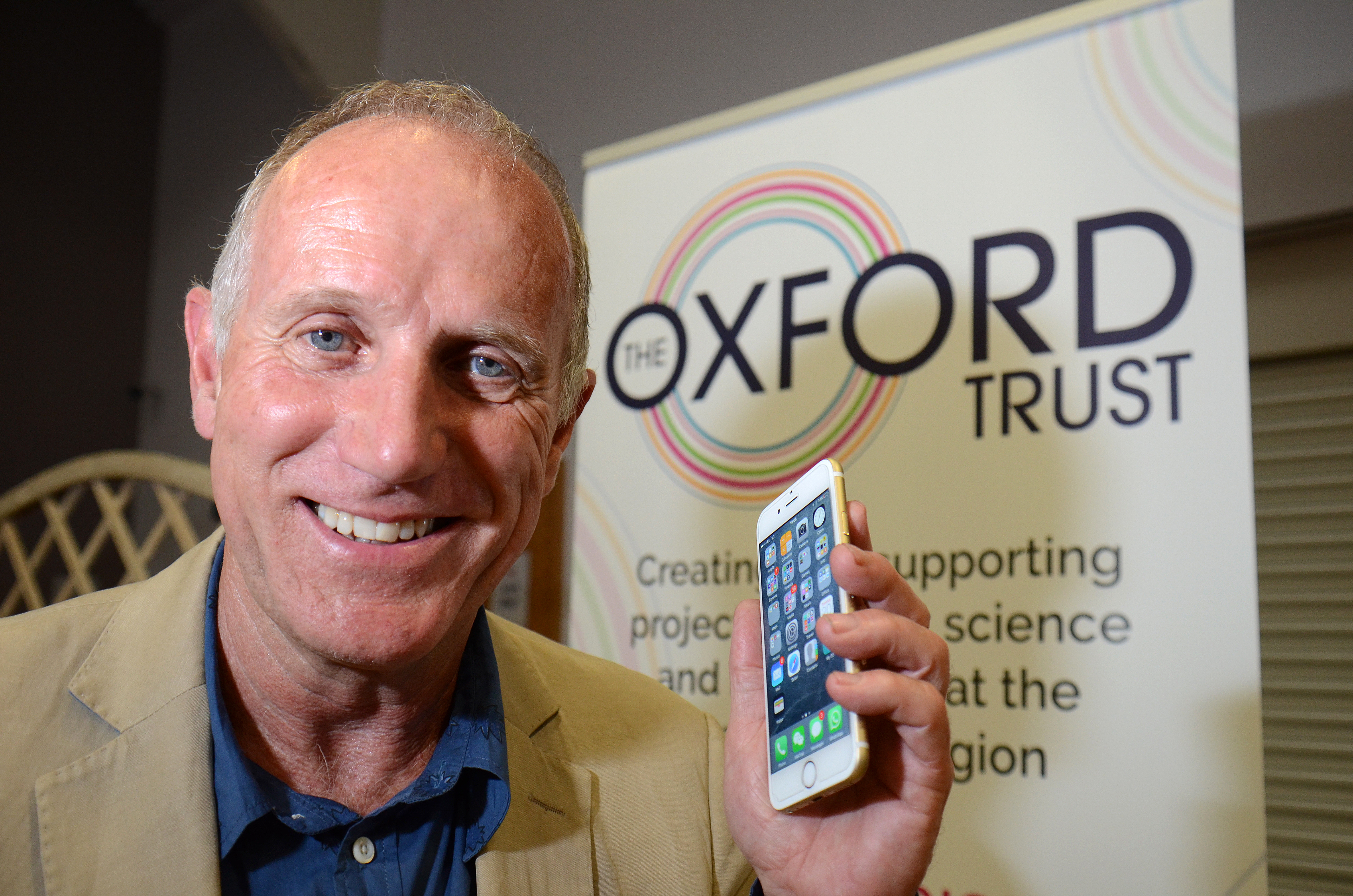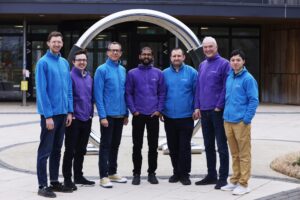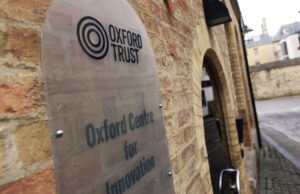ZapGo – positively changing charging
July 24, 2017

ZapGo, the technology firm that won the Marks & Clerk Best Tech Pitch at our recent Enterprise Awards, has developed a solution to a problem that we have probably all encountered – the painfully slow charging of our rechargeable appliances, devices and vehicles. How many times have you forgotten to put the camera on charge the night before a big trip and been left with low battery? Or had to spend another day looking at the cat hair on the stairs because the wall-mounted hoover is still charging-up?
As Simon Harris, investment director at ZapGo said in a recent Oxford Times article (see photo): “There are so many devices and so many batteries which need charging and recharging again and again.”
Most of our rechargable devices run on lithium-based batteries, which need to be charged slowly as lithium is volatile and could catch fire if charged too quickly. ZapGo’s battery technology, which is called Carbon-Ion or C-Ion for short, uses carbon nano-materials including the ‘wunderkind’ material graphene, which allows for ultra-fast charging in five minutes or less.
This is the techy part. Graphene was discovered by two Nobel Prize-winning scientists at Manchester University ten years ago. It is so thin that it would take two million sheets piled on top of each other to be the width of a penny coin. Yet each of these lightweight sheets conducts electricity better than copper – making it an excellent component for battery charging. There are other benefits too; the C-Ion charger has a much longer lifespan than ordinary chargers, is shaped like a flat pack so is easy to install in hand held devices and is composed of recyclable materials, which means it has a USP in sustainability.
Harwell Campus-based ZapGo was founded in 2013 by entrepreneur and technology expert Stephen Voller and originally called London Graphene. It now employs 22 staff and plans to recruit more as manufacturing of the C-Ion charger begins. This is not Stephen’s first innovative new product. He invented the first CE marked portable hydrogen fuel cell system, which resides in the Science Museum.
The ZapGo team is now developing its fast charging technology for use in home appliances such battery-powered power tools and uber-trendy electric scooters. The C-Ion charger will go into production in 2018 and is set to transform the sector. Amazing stuff. When you’ve got exciting technology like this, you can see why ZapGo won Best Tech Pitch at the awards.
To find out more about ZapGo, see here



